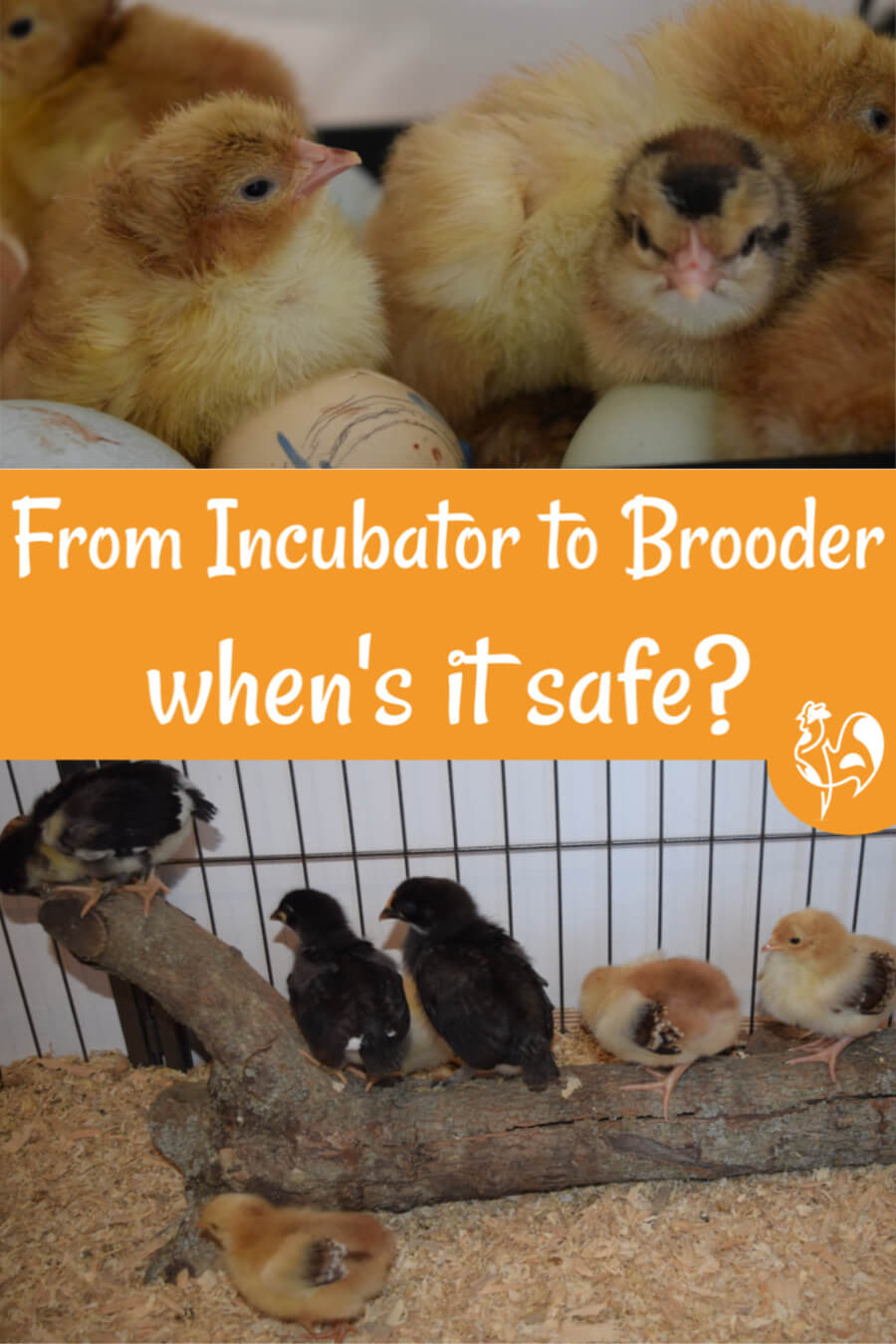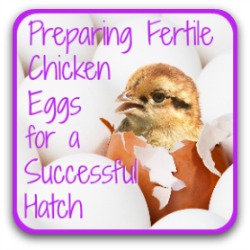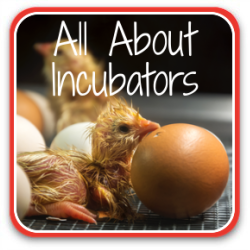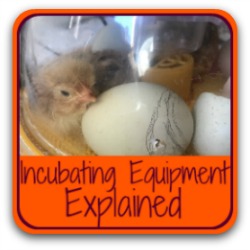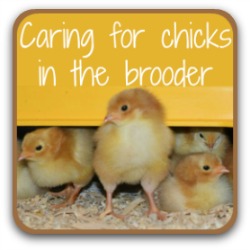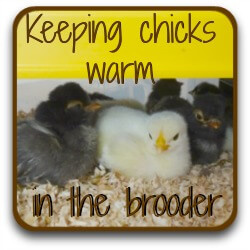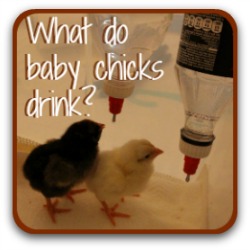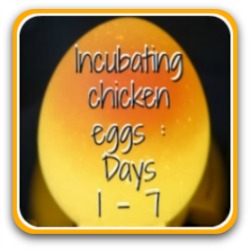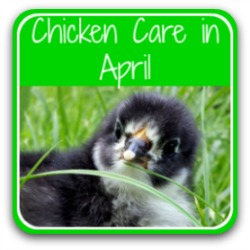- Home
- Chicks in the Brooder
- Incubator to Brooder
From egg incubator to brooder: when and how to move chicks safely.
Incubation's finished, your chicks have hatched and now they need to go from egg incubator to brooder. But how? And when?
You think the stressful time is over. You've negotiated the anxieties of incubation and you have a batch of newly-hatched chicks.
You should be able to sit back and relax. But...
You quickly discover there are more disturbing times to come. Because now, you need to safely move your chicks from the egg incubator over to your brooder - without harming them.
These might be some of the things worrying you...
- How long can chicks stay in the incubator?
- Won't they get too hot in there?
- Do they need food and water?
- When's it safe to move them?
- What about the other eggs?
- Is it OK to open the incubator lid?
- Will they get cold if they're not moved straight away?
- Will they get cold if they are?
So many questions ... but don't worry. The answers are all in this article.
Do you have a question you'd like to ask me?
Whatever it's about, ask your question and I'll answer you – on video.
To find out exactly how you can, take a look at my article about my backyard "Chicken Chat" Q&A sessions.
How long should newly-hatched chicks stay in the incubator?
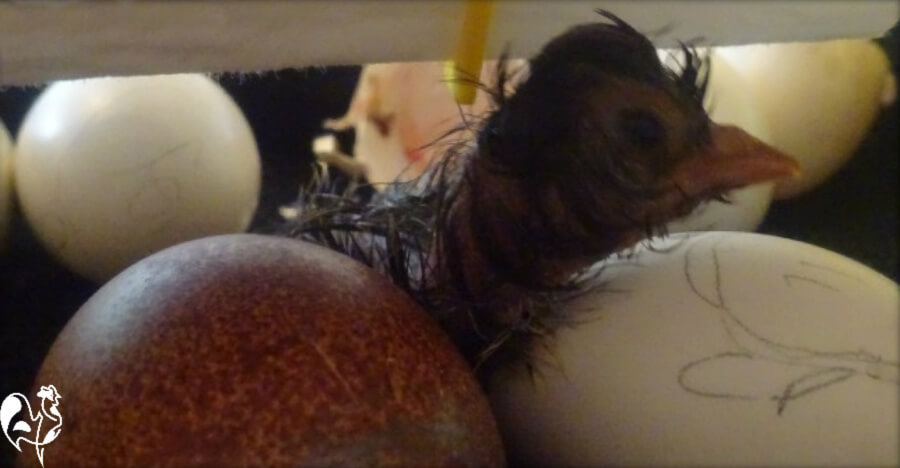 One of my Polish/Poland chicks immediately post hatch - still wet.
One of my Polish/Poland chicks immediately post hatch - still wet.Chicks come out of the egg very wet and should not be moved from the warmth of the incubator until they are properly fluffed up. Moving them before that can chill them, and chicks can die very easily if they become chilled.
There's no hard and fast rule about when this should be. Chicks will progress at different speeds. Some will fluff up within an hour, others take longer. It partly depends how many chicks are hatching at the same time, because each hatch raises the humidity level in the incubator.
- Keep an eye on your chicks. Make sure they're beginning to dry out within an hour or so of hatching.
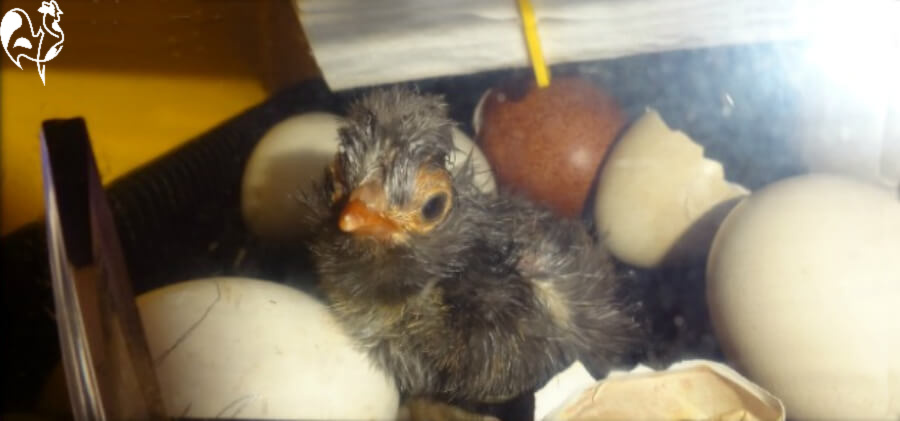 The same chick, two hours post-hatch. and fluffing up nicely.
The same chick, two hours post-hatch. and fluffing up nicely.Do chicks need food and water after they hatch?
No. The yolk of the egg, which they absorb immediately before hatch, nourishes them for up to 72 hours.
- So don't panic if you think your new chicks might be hungry. They're not.
Is it safe to open the egg incubator to move chicks to the brooder?
It's safe to do this if you are absolutely sure that no other chicks have 'pipped' (started to make a crack in the egg shell). Even if the pip is tiny, opening the incubator at that point will cause humidity to drop immediately. In turn, that can dry out the membrane of any chicks who have begun to pip.
A dried out membrane means the chick is unlikely to be able to hatch itself. Either it will wrap itself round the chick, known as "shrink wrapping". Or the membrane will simply become very 'leathery' and hard, rather than moist and pliable.
What does that mean? It means the chick simply won't be able to break through it to hatch. At best this means you will have to assist it in hatching. At worst it will mean that the chick will die in the egg.
- So resist the temptation to open the incubator too soon. The chicks will be fine in there for several hours.
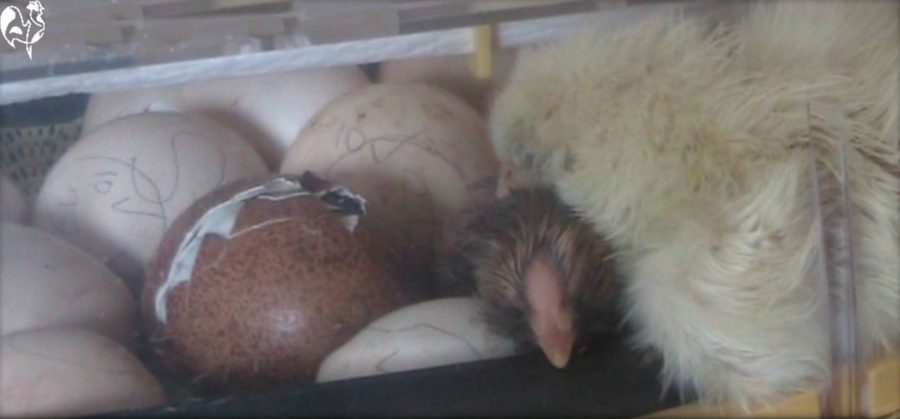 One of my Wyandottes and a Light Sussex chick sleeping it off as another chick hatches.
One of my Wyandottes and a Light Sussex chick sleeping it off as another chick hatches.The exception to this is if chicks have dried out, are fluffed up and start to pant. Panting suggests dehydration, and if chicks are left for too long in the incubator that can also kill them.
Keep your eyes open. Chicks with an open beak and breathing heavily are the clue. If that happens, open the incubator for a very, very short time. Get someone to help you lift the lid while you remove the chick. Replace the lid as soon as you've done it. It should only take a matter of seconds.
- If the humidity drops massively, take a piece of scrunched up kitchen paper, soak it in warm - not cold - water, and place it in the incubator. The humidity levels will quickly return to where they were.
What about the other eggs?
When chicks hatch they tend to stumble around the incubator like mini-dinosaurs, not really able yet to keep control of their legs.
They will inevitably knock into other eggs which haven't yet even started to hatch and it can be worrying to think that, having left our eggs in peace since lockdown, these little dinos are kicking them around.
- Don't worry. All will be fine. There is evidence that the eggs being moved by the already hatched chicks, and in particular their peeping, encourages the other chicks to start pipping.
What about chicks who look as though they've suddenly dropped dead?
Pipping, unzipping and hatching takes an enormous amount of energy out of the chick and their need for rest immediately post-hatch is strong.
One minute they'll be stumbling round the incubator. The next, they'll suddenly drop. If you've never seen that happen before it can be scary, because it looks as though the chick has suddenly dropped dead.
- In fact, it's just sleeping. Leave it in peace. It will be fine.
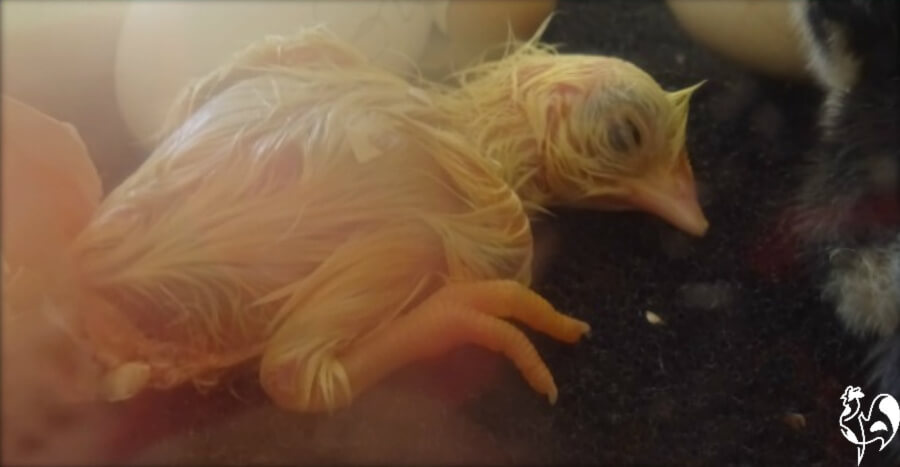 Not dead, just sleeping off the stresses of hatch - one of my Light Sussexes immediately after hatching.
Not dead, just sleeping off the stresses of hatch - one of my Light Sussexes immediately after hatching.Do chicks in the incubator need food and water?
Chicks are fine without either for up to 72 hours - that's how hatcheries are able to ship day old chicks. The yolk, which is absorbed in the last hours of incubation, will nourish the chick for all that time.
However, I usually take chicks out once they are properly dried as long as there are no other eggs pipping. If there are, I leave them alone until no other pips can be seen and then open the incubator lid for as short a time as possible while I take the fluffed-up chick(s) out.
- Most chicks will be dry within a few hours of hatch unless others are hatching, when it may take longer because the humidity in the egg incubator will rise.
I am fortunate enough to have two Brinsea Mini Advance incubators. I keep one for drying off chicks who may be having a hard time drying when others are still hatching.
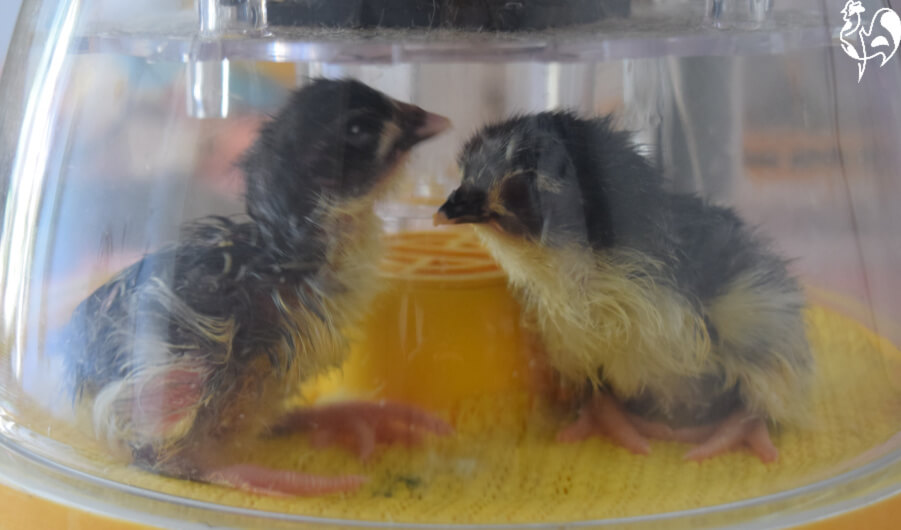 I moved these two chicks to a dry incubator while others were still hatching.
I moved these two chicks to a dry incubator while others were still hatching.What about a chick who can't seem to get dry?
Sometimes, if other chicks are hatching, the humidity in the incubator shoots up and chicks who have already hatched find it difficult to dry off.
There's then a balancing act to assess: leave the chick where it is and risk it becoming chilled and dying, or open the incubator to remove it and risk the other chicks who haven't yet hatched becoming 'shrink wrapped' in their membrane?
This really has to be dealt with according to each individual situation. I generally go for opening the incubator very quickly, scooping up the chick and adding some kitchen paper soaked in warm water into the incubator.
This raises the humidity level very quickly again and minimum damage is done to the unhatched chicks. But, it's your call. You need to make the assessment for yourself.
- Once I've removed a chick I place it in my little Mini Advance incubator which I always have standing by for just such cases. This allows them to dry properly and become fluffed up before I put them into the brooder box.
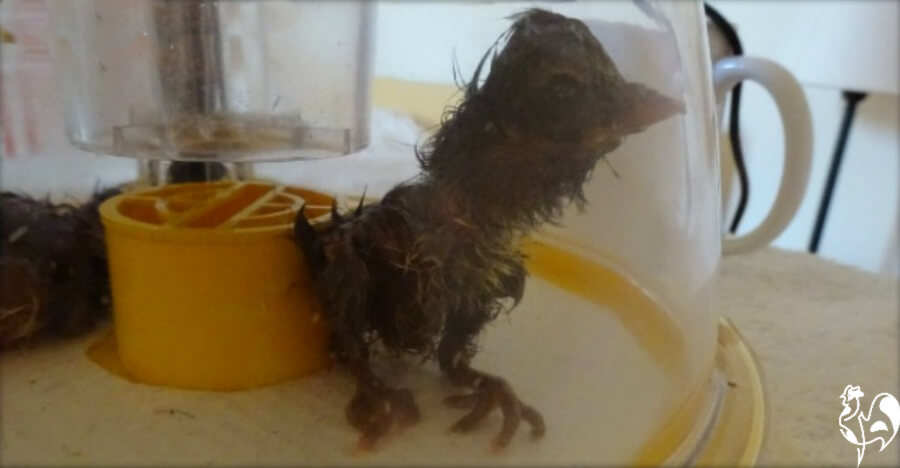 This chick wasn't drying properly and needed some 'me time' in the less humid incubator.
This chick wasn't drying properly and needed some 'me time' in the less humid incubator.This also applies to chicks who have had a hard time hatching and aren't looking as robust as the others. Leaving them in the hatching incubator can risk them being pecked or trampled by their more robust friends.
These chicks I generally move to my small incubator once it's safe to do so.
There's a chick with gunk coming out of it. Do I need to take it out and clean it off?
No. Resist this at all costs - you risk pulling the chick's insides out.
Sometimes chicks will still have bits of shell, membrane or the umbilical cord still attached post hatch and you may even see a chick unable to stand, dragging its shell behind it.
That's how this Light Sussex was - still attached to the shell for about an hour after hatching. Soon after, it dried out and the cord came off by itself.
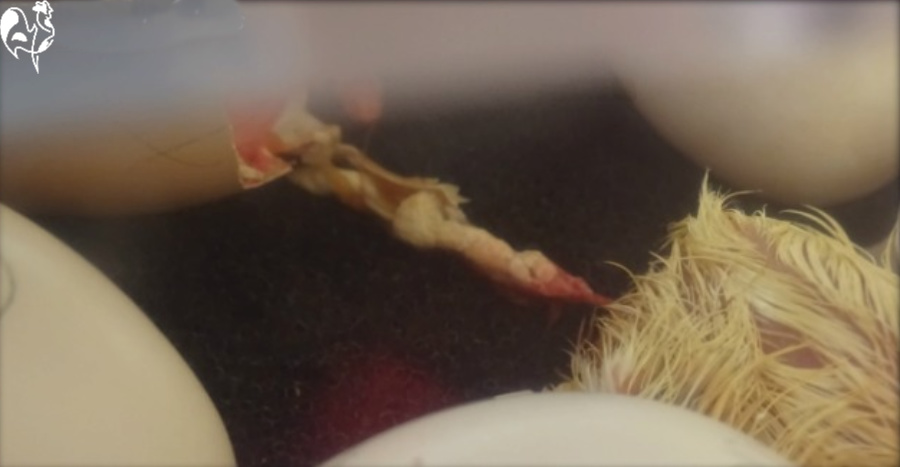
So, leave it be.
- Don't be tempted to cut anything - you may rupture a blood vessel and once the chick begins to dry, so will the 'gunk'. It will then fall off of its own accord. There's no need to do anything.
- And remember: opening the incubator unnecessarily may compromise your other chicks.
So the chick is fluffed up and there is no more pipping going on. Now what?
The heat source, whatever it is, needs to have been warmed up and you should have water and food at the ready. Take the chicks from the incubator and transfer them into the brooder.
Once again - the tip to raise humidity quickly when you've taken a chick out of the brooder: put a scrunched up paper towel soaked in warm (not cold) water inside the incubator and close the lid.
- You should have a brooder box ready for the chicks to go into, placed somewhere warm but not too hot where it can't be disturbed by pets, children or general passing traffic.
How much food and water do they need?
As soon as you put the chicks into the brooder box, immediately dip their beak into the water source. They learn straight away where to go to keep hydrated.
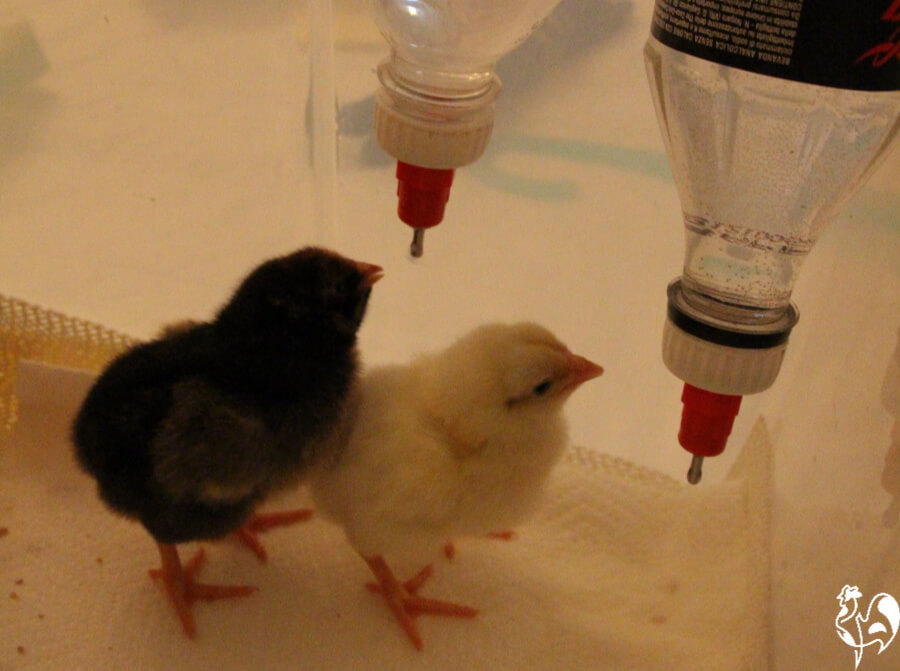 If you use nipple waterers, tap the chick's beak against the nipple so they know where water comes from.
If you use nipple waterers, tap the chick's beak against the nipple so they know where water comes from.If you use water pots, make sure they have some marbles or clean stones in them to prevent the chicks from harm. Chicks will fall into a pot very easily and it doesn't take much depth of water to drown them.
Then, sprinkle some chick starter feed on the floor of your brooder. Use paper towels for the first few days. This makes it clear where their food is, and the sound of the feed dropping encourages them to start pecking.
Works every time.
And then, leave them to it!
The first hours in the brooder will be quite scary for your chicks. They've just spent three weeks in a nice comfortable egg, then hatched into a strange space and now been moved to another strange place.
You'll find that they need time to adjust, and a lot of that time will be spent asleep. Don't worry about it - it's perfectly normal. Just keep an eye on them to make sure no-one is becoming chilled.
- Now we're at the start of the chicks' first week in the brooder.
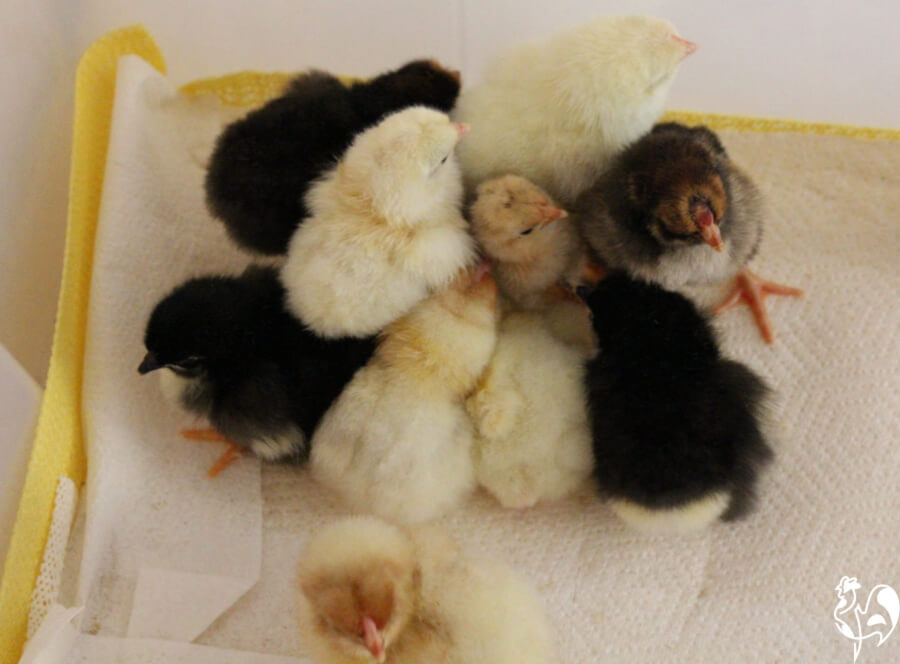 Chicks huddle together for comfort when first in the brooder.
Chicks huddle together for comfort when first in the brooder.If you're planning to hatch chicks, you'll find these pages useful.
- Home
- Chicks in the Brooder
- Incubator to Brooder
